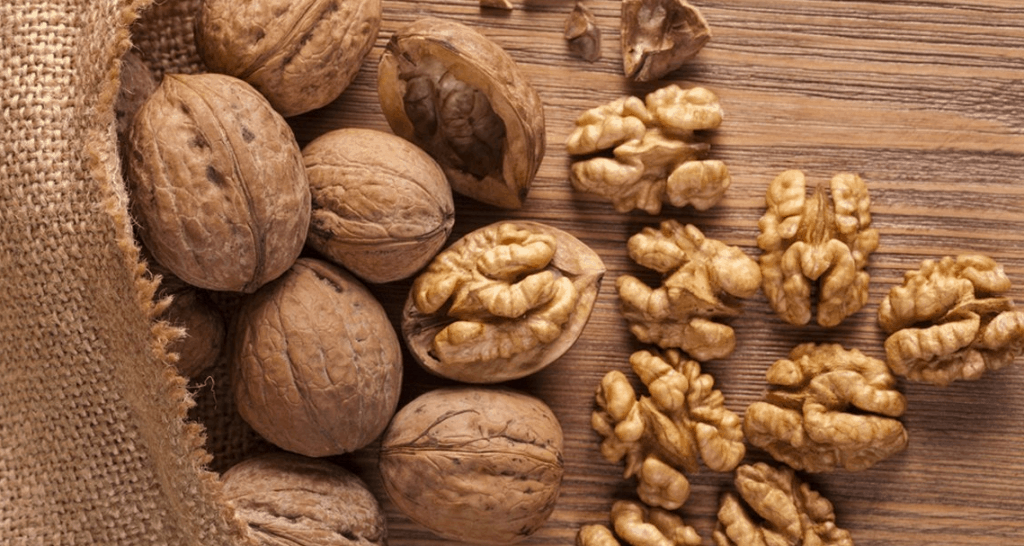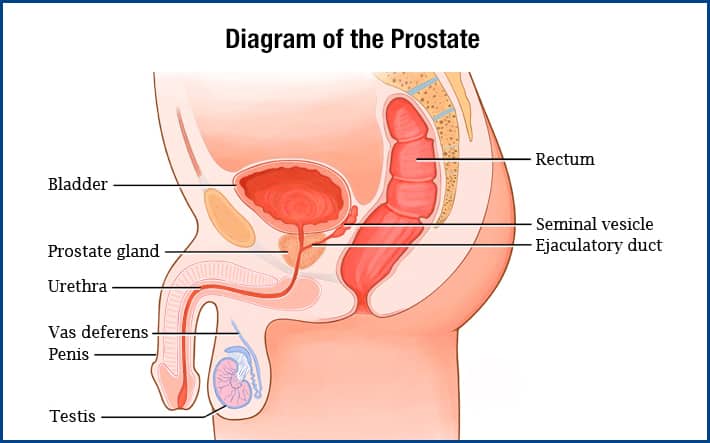What is the Prostate

Medically reviewed by Dr. Paul Song M.D
Article at a Glance
- The prostate is an organ composed of dozens of minute glands as well as muscle cells and fibrous cells.
- The prostate has numerous functions in a man’s sexual and reproductive health.
- There are three main conditions that can affect the prostate: BPH, prostatitis, and prostate cancer.
Here’s something you probably didn’t know about the prostate. Although people typically refer to it as a gland, it’s actually an organ composed of dozens of minute glands (called tubuloalveolar glands), as well as muscle cells and fibrous cells. A layer of connective tissue (called the prostatic capsule) covers the entire chestnut-sized prostate, which has three zones: peripheral, central, and transition. It’s important to know about these three zones when we talk about prostate cancer. The entire prostate weighs in at approximately 1 ounce (20-30 grams) when healthy. (More about an unhealthy prostate later.)
Exactly Where Is the Prostate?
Your prostate is located between the bladder and the penis and in front of the rectum. It also is wrapped around the urethra, the tube that transports urine from the bladder through the penis and out of the body. The urethra serves as an escape route for semen to leave the body through the penis during ejaculation.
ADVERTISEMENT

Adjacent to the prostate are several other structures that may come up in conversations with your doctor. They are:
- Seminal vesicles: Semen-producing glands located on both sides of the prostate
- Vas deferens: Tubes that transport sperm from the testicles to the seminal vesicles
- Nerve bundles: Structures located on both sides of the prostate that control erectile and bladder function
What Should I Know About the Prostate’s Three Zones?
An understanding of the three zones can help you better appreciate how much medical professionals can tell about the health or dysfunction of your prostate. For example:
- Peripheral zone: This is the largest zone and the one closest to the rectum. Therefore, this zone is the one your doctor can feel the easiest during a digital rectal examination (DRE). Approximately 75 percent of prostate tumors develop in the peripheral zone, so having routine DREs can go a long way toward discovering prostate tumors.
- Transition zone: This zone is located between the peripheral and central zones and surrounds the urethra as it passes through the organ. It’s called the transition zone because beginning around age 40, it begins to grow until it takes over as the largest zone of the prostate. This enlargement is called benign prostatic hyperplasia (BPH), a condition that causes difficulty with urination. Growth of the transition zone causes the peripheral zone to be shoved toward the rectum.
- Central zone: This zone is farthest from the rectum. Therefore, any tumors that develop in this area cannot be felt by a doctor during a DRE.
About the Prostate: What Does It Do?
The prostate has numerous functions. One is the production of a milky fluid that makes up about 20 percent of semen. This fluid nourishes the sperm and helps them survive in the acidic vaginal environment until they reach the cervix and uterus. The organ filters and removes environmental chemicals that may jeopardize the viability of sperm. In addition, the prostate fluids protect against development of urinary tract infections.
Some of the other functions of the prostate:
-
- Muscles in the prostate called sphincters act as valves to control the flow of urine, ejaculated semen, and seminal fluid. These muscles are located at the base of the prostate and where the upper prostate and bladder meet. If these muscles are damaged, you may experience urinary incontinence. Problems with the sphincter at the base of the prostate can cause retrograde ejaculation.
- Nerves in the prostate have a role in the ability to achieve an erection. However, you can still have an erection if these nerves are damaged or if the prostate has been removed.
- An enzyme called 5-alpha-reductase is found in the prostate, where it converts testosterone to dihydrotestosterone (DHT)
- It produces prostate-specific antigen (PSA), which helps keep sperm in a liquid form so it can better reach the uterus. PSA is the substance measured in the blood during the PSA test for prostate problems.
- The prostate, which is sometimes referred to as the male G-spot, has a role in sexual satisfaction. Stimulation of the organ can result in intense orgasms, and a man’s ability to control ejaculation can lead to prolonged orgasms and other strong sexual responses.
Can I Live Without a Prostate?
The prostate is similar to the spleen in that while it does perform some important functions, it isn’t essential for life. If it were necessary to remove your prostate (prostatectomy) because of prostate cancer or, infrequently, benign prostatic hyperplasia, the act of taking away the organ would not be life-threatening in any way. Erectile dysfunction is often a side effect of a prostatectomy (and other prostate cancer treatments), yet many men are able to regain erectile function over time.
What Can Go Wrong with the Prostate?
When your prostate is healthy, it’s easy to treat it as out-of-sight, out-of-mind. Many men don’t give their prostate a second thought unless something triggers them to take notice, such as a doctor’s suggestion they get a prostate examination, a friend or relative announces he has a prostate problem, or they notice some discomforting, disturbing symptoms themselves.
Generally, there are three conditions that can affect your prostate: benign prostatic hyperplasia (BPH), prostatitis, and prostate cancer. Although each of them has somewhat similar symptoms, those associated with prostate cancer typically don’t become obvious until later in the course of the disease. That’s why it’s important to see your healthcare provider as soon as possible once symptoms occur so a diagnosis can be made and treatment, if necessary, can begin.
Which Symptoms Should I Be Looking For?
Symptoms associated with prostate problems don’t pop up overnight, but you may notice a gradual increase in the following urinary issues:
- A frequent urge to urinate (even if there’s little to no flow)
- Dribbling
- Difficulty starting to urinate (straining and/or hesitancy)
- Feeling that your bladder isn’t completely empty after urinating
- A sudden, uncontrollable urge to urinate
- Waking several times during the night to urinate
- Pain during urination
The presence of such symptoms doesn’t always mean you have a prostate condition. Urinary tract infections, for example, are associated with these symptoms, as are heart failure, some neurological diseases, and diabetes. The sooner you address these symptoms, the better you will be able to identify their cause and manage them. Many treatment options, including lifestyle modifications and conventional medications, are available to help you tackle prostate issues head on.
What Is Benign Prostatic Hyperplasia?
BPH, also known as benign prostatic hypertrophy, is commonly referred to as an enlarged prostate. The critical word here is “benign,” which means this is not a cancerous condition. Hyperplasia or hypertrophy means overgrowth or enlargement. Although BPH is rarely a life-threatening condition, it can have a significant impact on your quality of life. Therefore, it makes sense to seek medical advice if you experience symptoms associated with the disease.
If you develop BPH, you are not alone. About 50 percent of men have pathologic evidence of the disease when they are 50 to 60 years old, and the numbers increase to about 90 percent by the 80s.
What Is Prostatitis?
Prostatitis is a general term for inflammation (“itis”) of the prostate. Of the four types of prostatitis (acute bacterial, chronic bacterial, chronic prostatitis/chronic pelvic pain syndrome or CP/CPPS, and asymptomatic), all of which are benign, CP/CPPS is by far the most common.
About 50 percent of males will be diagnosed with prostatitis at some point during their lifetime, and as many as 35 percent of men older than 50 have chronic prostatitis. Symptoms can range from mild to severe, but there are numerous treatment approaches, many involving lifestyle and natural methods, that can allow you to effectively manage the disease.
What Is Prostate Cancer?
Prostate cancer is the development of a malignant tumor or growth caused by abnormal or uncontrolled cell division in the prostate. Although there are many things you should know about prostate cancer, two issues that are especially important to understand upfront are:
- While it is the most serious of the prostate problems, it also is the one that usually has no early warning signs; and
- Prostate cancer is really several diseases that have different causes. That is, the more aggressive and deadly cancers appear to have different fundamental causes than the more slow-growing cancers.
The earlier prostate cancer is diagnosed, the better your chances of beating it, and it can be beat. More men with prostate cancer die with the disease than from the disease. However, for the best quality of life, you should stay current with the latest information about prevention, diagnosis, and treatment options and be an active participant in your own health, and that includes screening for prostate cancer.
